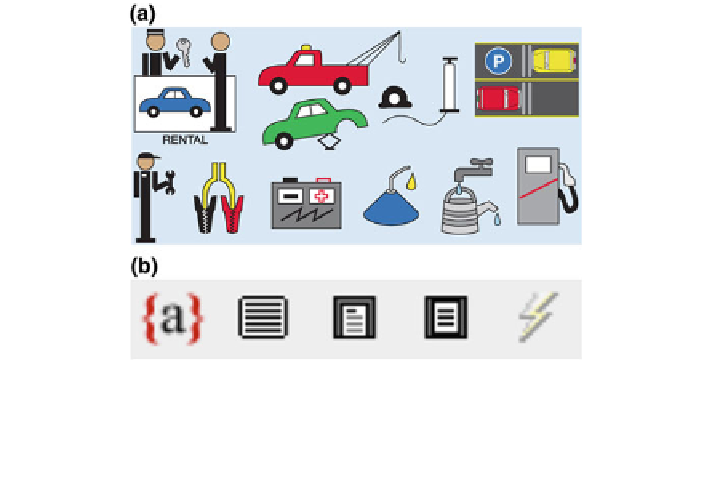Information Technology Reference
In-Depth Information
Fig. 5.3 The top figure is taken from a Kwikpoint travel guide designed to help communicate in
a foreign language (you point at what you mean), used with permission. Icons on the bottom are
taken from Word 2011 (The icons in Fig. 5.3b mean, from right to left: view field codes, zoom
100%, online layout, page layout, and automatic change. Word is improving in that you can now
mouse over the icons to learn their names.)
• The impact of interruptions. Many work environments include numerous
interruptions. The effect of these on the way that items are stored in, and
retrieved from, memory is just starting to be studied. What work exists suggests
to us that the length of interruption is less important than the similarity of
material processed.
• Other memory tasks. Most of the memory literature concerns simply learning a
list and then recalling it sometime later. Many work-related memorial tasks
involve retaining some piece of information for a short time, then replacing it
with some similar piece of information ('keeping track' tasks). These have not
been studied very often.
• Support for memory. Most of the literature is studies of processes and archi-
tectures of memory—but our interest is in preventing the need for memory and
providing support for tasks requiring the use of memory. This is an active area
for design.
5.3
Attention
Everyone knows what attention is. It is the taking possession by the mind in clear and
vivid form, of one out of what seem several simultaneously possible objects or trains of
thought…It implies withdrawal from some things in order to deal effectively with others,
and is a condition which has a real opposite in the confused, dazed, scatterbrained state.
William James

Search WWH ::

Custom Search